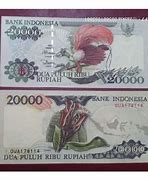
Milih Material yang Ekonomis tapi Tetap Berkualitas
Pemilihan material adalah salah satu faktor yang sangat mempengaruhi biaya bangun rumah. Dengan modal Rp20.000.0000, kamu harus pintar-pintar milih material yang nggak cuma murah, tapi juga tahan lama.
Buat hemat biaya, kamu bisa cari material bekas yang masih layak pakai, seperti kayu atau pintu bekas yang sering dijual di pasar loak atau toko material bekas.
Lunar geologic timescale
Millions of years before present
The lunar geological periods are named after their characteristic features, from most impact craters outside the dark mare, to the mare and later craters, and finally the young, still bright and therefore readily visible craters with ray systems like Copernicus or Tycho.
Isotope dating of lunar samples suggests the Moon formed around 50 million years after the origin of the Solar System.[36][37] Historically, several formation mechanisms have been proposed,[38] but none satisfactorily explains the features of the Earth–Moon system. A fission of the Moon from Earth's crust through centrifugal force[39] would require too great an initial rotation rate of Earth.[40] Gravitational capture of a pre-formed Moon[41] depends on an unfeasibly extended atmosphere of Earth to dissipate the energy of the passing Moon.[40] A co-formation of Earth and the Moon together in the primordial accretion disk does not explain the depletion of metals in the Moon.[40] None of these hypotheses can account for the high angular momentum of the Earth–Moon system.[42]
The prevailing theory is that the Earth–Moon system formed after a giant impact of a Mars-sized body (named Theia) with the proto-Earth. The oblique impact blasted material into orbit about the Earth and the material accreted and formed the Moon[43][44] just beyond the Earth's Roche limit of ~2.56 R🜨.[45]
Giant impacts are thought to have been common in the early Solar System. Computer simulations of giant impacts have produced results that are consistent with the mass of the lunar core and the angular momentum of the Earth–Moon system. These simulations show that most of the Moon derived from the impactor, rather than the proto-Earth.[46] However, models from 2007 and later suggest a larger fraction of the Moon derived from the proto-Earth.[47][48][49][50] Other bodies of the inner Solar System such as Mars and Vesta have, according to meteorites from them, very different oxygen and tungsten isotopic compositions compared to Earth. However, Earth and the Moon have nearly identical isotopic compositions. The isotopic equalization of the Earth-Moon system might be explained by the post-impact mixing of the vaporized material that formed the two,[51] although this is debated.[52]
The impact would have released enough energy to liquefy both the ejecta and the Earth's crust, forming a magma ocean. The liquefied ejecta could have then re-accreted into the Earth–Moon system.[53][54] The newly formed Moon would have had its own magma ocean; its depth is estimated from about 500 km (300 miles) to 1,737 km (1,079 miles).[53]
While the giant-impact theory explains many lines of evidence, some questions are still unresolved, most of which involve the Moon's composition.[55] Models that have the Moon acquiring a significant amount of the proto-earth are more difficult to reconcile with geochemical data for the isotopes of zirconium, oxygen, silicon, and other elements.[56] A study published in 2022, using high-resolution simulations (up to 108 particles), found that giant impacts can immediately place a satellite with similar mass and iron content to the Moon into orbit far outside Earth's Roche limit. Even satellites that initially pass within the Roche limit can reliably and predictably survive, by being partially stripped and then torqued onto wider, stable orbits.[57]
On November 1, 2023, scientists reported that, according to computer simulations, remnants of Theia could still be present inside the Earth.[58][59]
The newly formed Moon settled into a much closer Earth orbit than it has today. Each body therefore appeared much larger in the sky of the other, eclipses were more frequent, and tidal effects were stronger.[60] Due to tidal acceleration, the Moon's orbit around Earth has become significantly larger, with a longer period.[61]
Following formation, the Moon has cooled and most of its atmosphere has been stripped.[62] The lunar surface has since been shaped by large impact events and many small ones, forming a landscape featuring craters of all ages.
The Moon was volcanically active until 1.2 billion years ago, which laid down the prominent lunar maria. Most of the mare basalts erupted during the Imbrian period, 3.3–3.7 billion years ago, though some are as young as 1.2 billion years[63] and some as old as 4.2 billion years.[64] There are differing explanations for the eruption of mare basalts, particularly their uneven occurrence which mainly appear on the near-side. Causes of the distribution of the lunar highlands on the far side are also not well understood. Topological measurements show the near side crust is thinner than the far side. One possible scenario then is that large impacts on the near side may have made it easier for lava to flow onto the surface.[65]
Cultural representation
Since prehistoric times humans have depicted and later described their perception of the Moon and its importance for them and their cosmologies. It has been characterized and associated in many different ways, from having a spirit or being a deity, and an aspect thereof or an aspect in astrology.
For the representation of the Moon, especially its lunar phases, the crescent (🌙) has been a recurring symbol in a range of cultures since at least 3,000 BCE or possibly earlier with bull horns dating to the earliest cave paintings at 40,000 BP.[220][226] In writing systems such as Chinese the crescent has developed into the symbol 月, the word for Moon, and in ancient Egyptian it was the symbol 𓇹, meaning Moon and spelled like the ancient Egyptian lunar deity Iah,[334] which the other ancient Egyptian lunar deities Khonsu and Thoth were associated with.
Iconographically the crescent was used in Mesopotamia as the primary symbol of Nanna/Sîn,[224] the ancient Sumerian lunar deity,[335][224] who was the father of Inanna/Ishtar, the goddess of the planet Venus (symbolized as the eight pointed Star of Ishtar),[335][224] and Utu/Shamash, the god of the Sun (symbolized as a disc, optionally with eight rays),[335][224] all three often depicted next to each other. Nanna/Sîn is, like some other lunar deities, for example Iah and Khonsu of ancient Egypt, Mene/Selene of ancient Greece and Luna of ancient Rome, depicted as a horned deity, featuring crescent shaped headgears or crowns.[336][337]
The particular arrangement of the crescent with a star known as the star and crescent (☪️) goes back to the Bronze Age, representing either the Sun and Moon, or the Moon and the planet Venus, in combination. It came to represent the selene goddess Artemis, and via the patronage of Hecate, which as triple deity under the epithet trimorphos/trivia included aspects of Artemis/Diana, came to be used as a symbol of Byzantium, with Virgin Mary (Queen of Heaven) later taking her place, becoming depicted in Marian veneration on a crescent and adorned with stars. Since then the heraldric use of the star and crescent proliferated, Byzantium's symbolism possibly influencing the development of the Ottoman flag, specifically the combination of the Turkish crescent with a star,[338] and becoming a popular symbol for Islam (as the hilal of the Islamic calendar) and for a range of nations.[339]
The features of the Moon, the contrasting brighter highlands and darker maria, have been seen by different cultures forming abstract shapes. Such shapes are among others the Man in the Moon (e.g. Coyolxāuhqui) or the Moon Rabbit (e.g. the Chinese Tu'er Ye or in Indigenous American mythologies the aspect of the Mayan Moon goddess, from which possibly Awilix is derived, or of Metztli/Tēcciztēcatl).[333]
Occasionally some lunar deities have been also depicted driving a chariot across the sky, such as the Hindu Chandra/Soma, the Greek Artemis, which is associated with Selene, or Luna, Selene's ancient Roman equivalent.
Color and material wise the Moon has been associated in Western alchemy with silver, while gold is associated with the Sun.[340]
Through a miracle, the so-called splitting of the Moon (Arabic: انشقاق القمر) in Islam, association with the Moon applies also to Muhammad.[341]
Moon Treaty and explorational absence (1976–1990)
Following the last Soviet mission to the Moon of 1976, there was little further lunar exploration for fourteen years. Astronautics had shifted its focus towards the exploration of the inner (e.g. Venera program) and outer (e.g. Pioneer 10, 1972) Solar System planets, but also towards Earth orbit, developing and continuously operating, beside communication satellites, Earth observation satellites (e.g. Landsat program, 1972), space telescopes and particularly space stations (e.g. Salyut program, 1971).
Negotiation in 1979 of Moon treaty, and its subsequent ratification in 1984 was the only major activity regarding the Moon until 1990.
Telescopic exploration (1609–1959)
In 1609, Galileo Galilei used an early telescope to make drawings of the Moon for his book Sidereus Nuncius, and deduced that it was not smooth but had mountains and craters. Thomas Harriot had made, but not published such drawings a few months earlier.
Telescopic mapping of the Moon followed: later in the 17th century, the efforts of Giovanni Battista Riccioli and Francesco Maria Grimaldi led to the system of naming of lunar features in use today. The more exact 1834–1836 Mappa Selenographica of Wilhelm Beer and Johann Heinrich von Mädler, and their associated 1837 book Der Mond, the first trigonometrically accurate study of lunar features, included the heights of more than a thousand mountains, and introduced the study of the Moon at accuracies possible in earthly geography.[242] Lunar craters, first noted by Galileo, were thought to be volcanic until the 1870s proposal of Richard Proctor that they were formed by collisions.[72] This view gained support in 1892 from the experimentation of geologist Grove Karl Gilbert, and from comparative studies from 1920 to the 1940s,[243] leading to the development of lunar stratigraphy, which by the 1950s was becoming a new and growing branch of astrogeology.[72]
History of exploration and human presence
Astronomy from the Moon
The Moon has been used as a site for astronomical and Earth observations. The Earth appears in the Moon's sky with an apparent size of 1° 48′ to 2°,[293] three to four times the size of the Moon or Sun in Earth's sky, or about the apparent width of two little fingers at an arm's length away. Observations from the Moon started as early as 1966 with the first images of Earth from the Moon, taken by Lunar Orbiter 1. Of particular cultural significance is the 1968 photograph called Earthrise, taken by Bill Anders of Apollo 8 in 1968. In April 1972 the Apollo 16 mission set up the first dedicated telescope,[294][295] the Far Ultraviolet Camera/Spectrograph, recording various astronomical photos and spectra.[296]
The Moon is recognized as an excellent site for telescopes.[297] It is relatively nearby; certain craters near the poles are permanently dark and cold and especially useful for infrared telescopes; and radio telescopes on the far side would be shielded from the radio chatter of Earth.[298] The lunar soil, although it poses a problem for any moving parts of telescopes, can be mixed with carbon nanotubes and epoxies and employed in the construction of mirrors up to 50 meters in diameter.[299] A lunar zenith telescope can be made cheaply with an ionic liquid.[300]
The only instances of humans living on the Moon have taken place in an Apollo Lunar Module for several days at a time (for example, during the Apollo 17 mission).[301] One challenge to astronauts during their stay on the surface is that lunar dust sticks to their suits and is carried into their quarters. Astronauts could taste and smell the dust, which smells like gunpowder and was called the "Apollo aroma".[302] This fine lunar dust can cause health issues.[302]
In 2019, at least one plant seed sprouted in an experiment on the Chang'e 4 lander. It was carried from Earth along with other small life in its Lunar Micro Ecosystem.[303]
Although Luna landers scattered pennants of the Soviet Union on the Moon, and U.S. flags were symbolically planted at their landing sites by the Apollo astronauts, no nation claims ownership of any part of the Moon's surface.[304] Likewise no private ownership of parts of the Moon, or as a whole, is considered credible.[305][306][307]
The 1967 Outer Space Treaty defines the Moon and all outer space as the "province of all mankind".[304] It restricts the use of the Moon to peaceful purposes, explicitly banning military installations and weapons of mass destruction.[308] A majority of countries are parties of this treaty.[309] The 1979 Moon Agreement was created to elaborate, and restrict the exploitation of the Moon's resources by any single nation, leaving it to a yet unspecified international regulatory regime.[310] As of January 2020, it has been signed and ratified by 18 nations,[311] none of which have human spaceflight capabilities.
Since 2020, countries have joined the U.S. in their Artemis Accords, which are challenging the treaty. The U.S. has furthermore emphasized in a presidential executive order ("Encouraging International Support for the Recovery and Use of Space Resources.") that "the United States does not view outer space as a 'global commons'" and calls the Moon Agreement "a failed attempt at constraining free enterprise."[312][313]
With Australia signing and ratifying both the Moon Treaty in 1986 as well as the Artemis Accords in 2020, there has been a discussion if they can be harmonized.[266] In this light an Implementation Agreement for the Moon Treaty has been advocated for, as a way to compensate for the shortcomings of the Moon Treaty and to harmonize it with other laws and agreements such as the Artemis Accords, allowing it to be more widely accepted.[265][267]
In the face of such increasing commercial and national interest, particularly prospecting territories, U.S. lawmakers have introduced in late 2020 specific regulation for the conservation of historic landing sites[314] and interest groups have argued for making such sites World Heritage Sites[315] and zones of scientific value protected zones, all of which add to the legal availability and territorialization of the Moon.[285]
In 2021, the Declaration of the Rights of the Moon[316] was created by a group of "lawyers, space archaeologists and concerned citizens", drawing on precedents in the Rights of Nature movement and the concept of legal personality for non-human entities in space.[317][318]
Coordination and regulation
Increasing human activity at the Moon has raised the need for coordination to safeguard international and commercial lunar activity. Issues from cooperation to mere coordination, through for example the development of a shared Lunar time, have been raised.
In particular the establishment of an international or United Nations regulatory regime for lunar human activity has been called for by the Moon Treaty and suggested through an Implementation Agreement,[265][267] but remains contentious. Current lunar programs are multilateral, with the US-led Artemis program and the China-led International Lunar Research Station. For broader international cooperation and coordination the International Lunar Exploration Working Group (ILEWG), the Moon Village Association (MVA) and more generally the International Space Exploration Coordination Group (ISECG) has been established.
Since pre-historic times people have taken note of the Moon's phases and its waxing and waning cycle, and used it to keep record of time. Tally sticks, notched bones dating as far back as 20–30,000 years ago, are believed by some to mark the phases of the Moon.[221][321][322] The counting of the days between the Moon's phases gave eventually rise to generalized time periods of lunar cycles as months, and possibly of its phases as weeks.[323]
The words for the month in a range of different languages carry this relation between the period of the month and the Moon etymologically. The English month as well as moon, and its cognates in other Indo-European languages (e.g. the Latin mensis and Ancient Greek μείς (meis) or μήν (mēn), meaning "month")[324][325][326][327] stem from the Proto-Indo-European (PIE) root of moon, *méh1nōt, derived from the PIE verbal root *meh1-, "to measure", "indicat[ing] a functional conception of the Moon, i.e. marker of the month" (cf. the English words measure and menstrual).[328][329][330] To give another example from a different language family, the Chinese language uses the same word (月) for moon as well as for month, which furthermore can be found in the symbols for the word week (星期).
This lunar timekeeping gave rise to the historically dominant, but varied, lunisolar calendars. The 7th-century Islamic calendar is an example of a purely lunar calendar, where months are traditionally determined by the visual sighting of the hilal, or earliest crescent moon, over the horizon.[331]
Of particular significance has been the occasion of full moon, highlighted and celebrated in a range of calendars and cultures, an example being the Buddhist Vesak. The full moon around the southern or northern autumnal equinox is often called the harvest moon and is celebrated with festivities such as the Harvest Moon Festival of the Chinese lunar calendar, its second most important celebration after the Chinese lunisolar Lunar New Year.[332]
Furthermore, association of time with the Moon can also be found in religion, such as the ancient Egyptian temporal and lunar deity Khonsu.
Modern culture representation
The perception of the Moon in modern times has been informed by telescope enabled modern astronomy and later by spaceflight enabled actual human activity at the Moon, particularly the culturally impactful lunar landings. These new insights inspired cultural references, connecting romantic reflections about the Moon[343] and speculative fiction such as science-fiction dealing with the Moon.[342][344]
Contemporarily the Moon has been seen as a place for economic expansion into space, with missions prospecting for lunar resources. This has been accompanied with renewed public and critical reflection on humanity's cultural and legal relation to the celestial body, especially regarding colonialism,[285] as in the 1970 poem "Whitey on the Moon". In this light the Moon's nature has been invoked,[316] particularly for lunar conservation[287] and as a common.[345][310][318]
In 2021 20 July, the date of the first crewed Moon landing, became the annual International Moon Day.[346]
The lunar effect is a purported unproven correlation between specific stages of the roughly 29.5-day lunar cycle and behavior and physiological changes in living beings on Earth, including humans. The Moon has long been associated with insanity and irrationality; the words lunacy and lunatic are derived from the Latin name for the Moon, Luna. Philosophers Aristotle and Pliny the Elder argued that the full moon induced insanity in susceptible individuals, believing that the brain, which is mostly water, must be affected by the Moon and its power over the tides, but the Moon's gravity is too slight to affect any single person.[347] Even today, people who believe in a lunar effect claim that admissions to psychiatric hospitals, traffic accidents, homicides or suicides increase during a full moon, but dozens of studies invalidate these claims.[347][348][349][350][351]
Cartographic resources
LINTAS SUMBA – Membangun rumah dengan anggaran terbatas bisa menjadi tantangan tersendiri, namun dengan perencanaan yang tepat, Anda bisa menciptakan rumah minimalis yang nyaman dan fungsional dengan modal sekitar 20 juta.
Berikut adalah beberapa tips untuk mewujudkan rumah minimalis dengan anggaran terbatas:
1. Rencanakan dengan Matang
Perencanaan adalah kunci utama dalam membangun rumah dengan anggaran terbatas. Buatlah desain rumah yang sederhana dan efisien. Fokus pada kebutuhan dasar dan hindari detail yang tidak perlu. Pastikan Anda memiliki denah yang jelas untuk meminimalkan perubahan selama proses pembangunan.
2. Pilih Lokasi yang Tepat
Lokasi tanah yang Anda pilih akan sangat mempengaruhi biaya pembangunan. Pilihlah lokasi yang strategis namun terjangkau. Tanah di pinggiran kota biasanya lebih murah dibandingkan di pusat kota. Pastikan juga tanah tersebut memiliki akses yang mudah ke fasilitas umum.
3. Gunakan Material yang Ekonomis
Pemilihan material yang ekonomis namun berkualitas sangat penting. Beberapa tips dalam memilih material adalah:
4. Manfaatkan Barang Bekas
Gunakan bahan-bahan bekas yang masih layak pakai seperti pintu, jendela, atau rangka kayu. Anda bisa mendapatkan barang-barang ini dari toko barang bekas atau memanfaatkan material yang ada di sekitar Anda.
5. Minimalisir Pemborosan Ruang
Desain rumah minimalis mengutamakan fungsi dan efisiensi ruang. Hindari membuat ruangan yang tidak diperlukan. Fokus pada ruang-ruang inti seperti kamar tidur, kamar mandi, dan ruang keluarga yang menyatu dengan dapur.
6. Lakukan Pekerjaan Sendiri
Jika memungkinkan, lakukan beberapa pekerjaan sendiri seperti pengecatan, pemasangan keramik, atau pekerjaan kayu sederhana. Ini bisa memangkas biaya tenaga kerja secara signifikan.
7. Gunakan Tenaga Kerja Lokal
Mempekerjakan tukang atau pekerja lokal bisa menjadi pilihan yang lebih ekonomis dibandingkan mendatangkan pekerja dari luar daerah. Pastikan Anda memilih pekerja yang berpengalaman dan memiliki reputasi baik.
8. Prioritaskan Fungsi daripada Estetika
Dengan anggaran terbatas, fokuslah pada fungsi rumah. Hindari dekorasi dan ornamen yang tidak perlu. Anda bisa menambahkan elemen estetika seiring waktu ketika anggaran sudah lebih longgar.
9. Manfaatkan Teknologi Prefabrikasi
Jika memungkinkan, gunakan teknologi prefabrikasi untuk beberapa bagian rumah seperti dinding atau atap. Teknologi ini memungkinkan Anda membangun dengan cepat dan efisien, sehingga dapat menghemat biaya.























